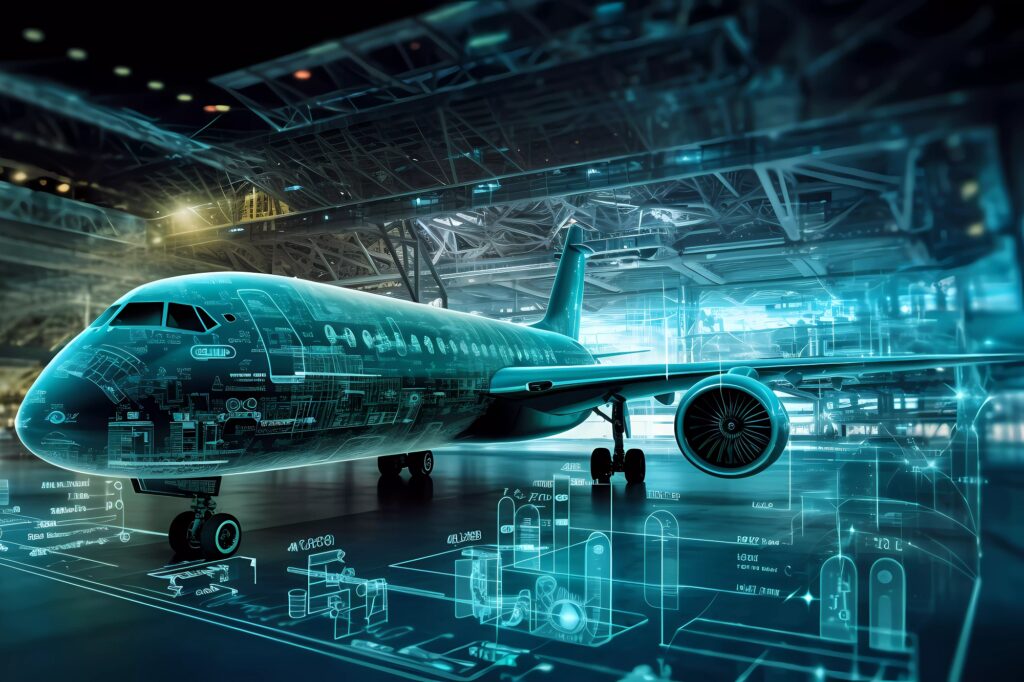In recent years, the integration of AI in multi-agent aerospace simulations has revolutionized the way we approach complex aerospace challenges. The use of AI in these simulations not only enhances efficiency but also provides new insights that were previously unattainable. As technology continues to evolve, the aerospace industry stands on the brink of a new era, driven by the power of artificial intelligence.
The role of AI in aerospace has expanded significantly, with multi-agent simulations leading the charge. These simulations involve multiple autonomous agents working together, each with its own set of objectives and capabilities. By incorporating AI, these agents can learn, adapt, and optimize their performance in real-time, creating more accurate and reliable models of aerospace environments.

What Are Multi-Agent Aerospace Simulations?
Multi-agent aerospace simulations are advanced computational models that simulate the interactions of multiple autonomous agents within a given environment. In the context of aerospace, these agents can represent anything from aircraft and spacecraft to ground control systems and environmental factors. The primary goal of these simulations is to predict and analyze the behavior of complex systems, allowing engineers and researchers to test new theories and technologies safely and efficiently.
The Importance of AI in Simulations
The integration of AI into multi-agent simulations is crucial for several reasons. Firstly, AI enhances the decision-making capabilities of individual agents, allowing them to adapt to changing conditions and make informed decisions. This adaptability is particularly important in aerospace, where conditions can change rapidly, and quick decision-making is essential for success.
Secondly, AI enables the simulation of more complex scenarios, providing deeper insights into potential outcomes and challenges. By leveraging machine learning algorithms, these simulations can process vast amounts of data and identify patterns that would be impossible for humans to detect. This capability allows researchers to uncover new strategies and solutions, improving the overall efficiency and safety of aerospace systems.
Applications of AI in Aerospace
1. Aircraft Design and Testing
One of the primary applications of AI in aerospace is in the design and testing of aircraft. By utilizing multi-agent simulations, engineers can model the performance of different aircraft configurations, testing their stability, efficiency, and safety before any physical prototypes are built. This approach not only reduces costs but also accelerates the development process, bringing new technologies to market faster.
2. Air Traffic Management
AI is also transforming air traffic management by optimizing flight paths and reducing congestion. Through the use of multi-agent simulations, air traffic controllers can analyze the movements of numerous aircraft simultaneously, identifying potential conflicts and suggesting alternative routes. This capability enhances the efficiency of air travel and reduces delays, benefiting both airlines and passengers.
3. Space Exploration
In the realm of space exploration, AI plays a crucial role in mission planning and execution. By simulating the interactions of spacecraft, rovers, and other assets, researchers can optimize mission parameters and ensure the success of complex operations. This capability is particularly important for missions to distant planets, where real-time decision-making is limited by communication delays.
Challenges and Opportunities
While the integration of AI in multi-agent aerospace simulations presents numerous opportunities, it also comes with its own set of challenges. One of the primary concerns is the need for robust and reliable algorithms that can handle the complexity of aerospace environments. Ensuring the accuracy and reliability of these simulations is critical, as any errors could have significant consequences.
Despite these challenges, the potential benefits of AI in aerospace are immense. With continued advancements in machine learning and computational power, the capabilities of multi-agent simulations will only continue to grow, opening new doors for innovation and discovery.
The Future of AI in Aerospace
As the aerospace industry continues to evolve, the role of AI in multi-agent simulations will become increasingly important. With the ability to model complex systems and predict outcomes with unprecedented accuracy, these simulations will play a crucial role in advancing our understanding of aerospace technologies and capabilities.
Furthermore, the integration of AI into aerospace systems will enhance their efficiency, safety, and sustainability, paving the way for a new era of innovation and exploration. As we look to the future, it is clear that AI will be at the forefront of aerospace advancements, driving progress and shaping the industry for years to come.
Conclusion
The incorporation of AI in multi-agent aerospace simulations represents a significant leap forward for the aerospace industry. By leveraging the power of artificial intelligence, these simulations provide valuable insights and solutions to complex challenges, enhancing the efficiency and safety of aerospace systems. As technology continues to advance, the potential for AI in aerospace is limitless, opening new possibilities for innovation and exploration.

FAQ
1. What is the role of AI in aerospace simulations?
AI enhances the decision-making capabilities of individual agents in simulations, allowing them to adapt to changing conditions and make informed decisions. This adaptability is crucial for success in the rapidly changing aerospace environment.
2. How do multi-agent simulations benefit aerospace?
Multi-agent simulations provide a safe and efficient way to test new theories and technologies, reducing costs and accelerating the development process. They also offer deeper insights into potential outcomes and challenges, improving overall efficiency and safety.
3. What are the challenges of integrating AI in aerospace?
One of the primary challenges is the need for robust and reliable algorithms that can handle the complexity of aerospace environments. Ensuring the accuracy and reliability of these simulations is critical, as any errors could have significant consequences.

